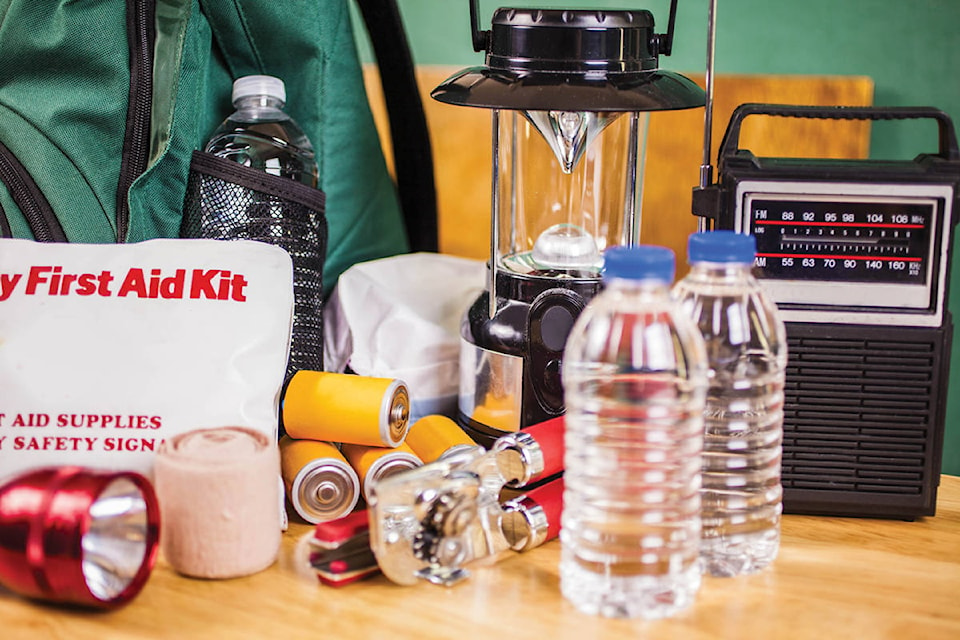People who assemble their disaster preparedness kits properly can avoid a rush to stockpile products.
That’s the advice from Karen Lindsay, City of Nanaimo emergency program manager, during Emergency Preparedness Week, which ran last week across the Island.
“The fundamentals for an emergency kit remain the same even for a pandemic,” Lindsay said. “What we don’t want to see is stockpiling of goods. What we saw early on in the pandemic is people were mass buying.”
RELATED: Most people in B.C. too ‘lazy,’ ‘apathetic’ to prepare for disasters: poll
Lindsay said people who’ve already compiled a basic emergency kit can just build on the one they have by adding in supplies that will enhance the kit’s effectiveness should disaster strike during a pandemic.
“Non-perishable foods and water,” Lindsay said. “Even the water for sanitizing. They recommend two litres of water per person per day, so that includes your cooking, your food and your sanitizing.”
Hand sanitizer and surgical or N95-type masks are items that could be added to better tailor a kit for use in a disaster during a pandemic.
“The thing you’ve got to be wary of with things like hand sanitizers and masks is that they do have a shelf life and so when you get that kit made the important thing is to remember to keep replenishing it and keep it fresh,” Lindsay said. “So the essentials in a kit stay the same. You can add a few additional items in it, but what we don’t is people going out and developing their kits and buying mass quantities of items and putting them into that kit.”
Emergency kits should have sufficient supplies to sustain an individual or a family for anywhere from 72 hours to seven days.
For more information on how to prepare and make an emergency kit visit www.nanaimo.ca and go to the emergency management page or visit the province’s Prepared B.C. site at www.gov.bc.ca/preparedbc.
RELATED: Family of B.C. wildfire victim wants better emergency preparedness for vulnerable people
“The information that you see on those links, that’s your worst-case scenario type of kit, so if you have that you’re sort of prepared for anything else,” Lindsay said. “If you put those kits together and have those things in place now, we’re not going to see that stockpiling happening because everybody’s prepared or should be prepared.”
For more news from the Island and beyond delivered directly to your email inbox, click here.
photos@nanaimobulletin.com
Like us on Facebook and follow us on Twitter
